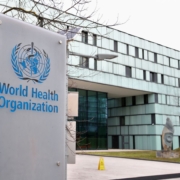Risk to humans from H5N1 bird flu remains low but we must prepare – WHO
Risk to humans from H5N1 bird flu remains low but we must prepare – WHO
By Jennifer Rigby and Gabrielle Tétrault-Farber
LONDON, Feb 8 (Reuters) – The recent spread to mammals of H5N1 influenza – commonly known as bird flu – needs to be monitored, but the risk to humans remains low, the World Health Organization said on Wednesday.
H5N1 has spread among poultry and wild birds for 25 years, Director-General Tedros Adhanom Ghebreyesus told reporters in a virtual briefing, but the recent reports of infections in mink, otters and sealions “need to be monitored closely”.
He said the risk to humans remained low, noting that human cases have been rare since the flu strain emerged in 1996.
“But we cannot assume that will remain the case and we must prepare for any change in the status quo,” Tedros said.
He said people were advised not to touch dead or sick wild animals and to instead report them to local and national authorities, who were monitoring the situation.
The WHO also recommended strengthening surveillance in settings where humans and animals interact, he said.
“WHO is also continuing to engage with manufacturers to make sure that, if needed, supplies of vaccines and antivirals would be available for global use,” he said.
Our Standards: The Thomson Reuters Trust Principles.
Source: Reuters











